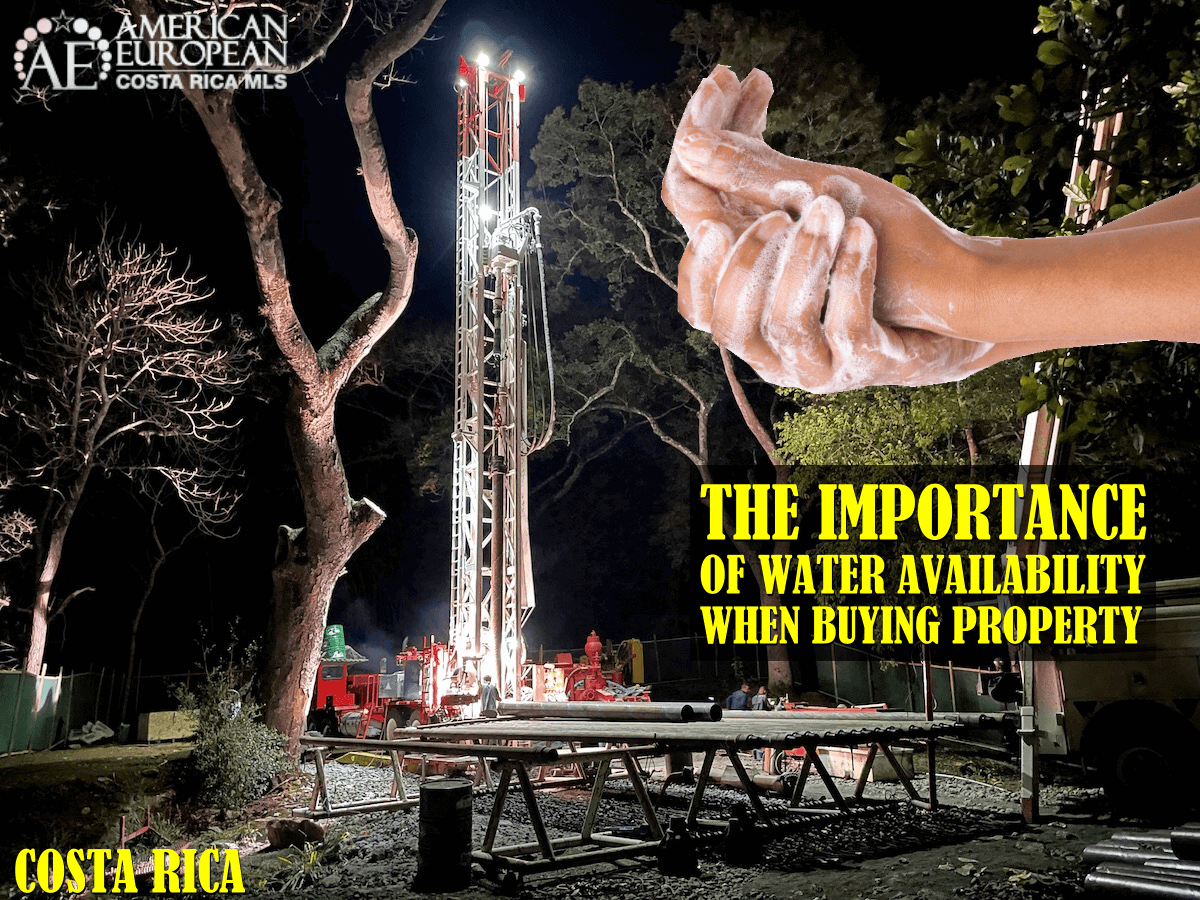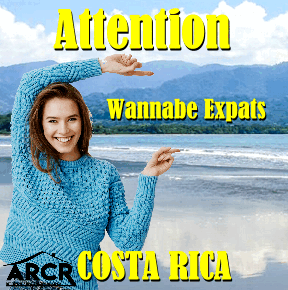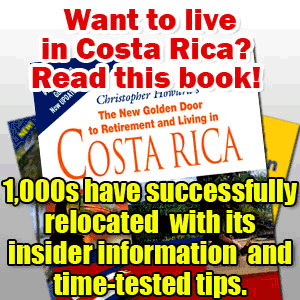Estimated Reading Time: 4 Minutes
Did you know you cannot build on a property without the water company approving water availability? Wikipedia makes a very important statement about the water resources in Costa Rica:
Urban development continues to increase the pressure on water resources, and the use of water and groundwater, in particular, is becoming increasingly more complex due to rapid urbanization and over-exploitation from domestic, industrial, and agricultural demand.
Before purchasing any property, verify the legality of your water source first.
Access to clean potable water is essential for any property in Costa Rica. Various methods exist to obtain a water source, such as connecting to the local water district or drilling a well. However, verifying the water source’s legality before purchasing any property is crucial.
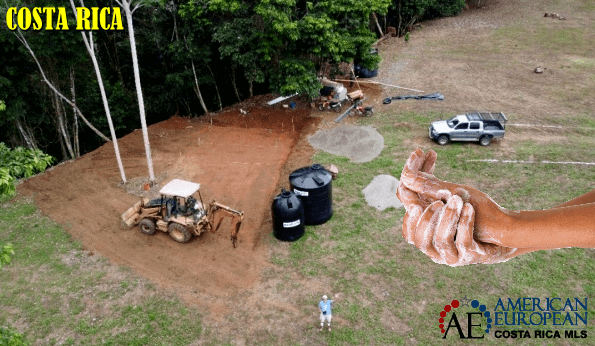
Water Sources
If there is a house on the property, don’t assume there is legal water there. Verify how and by whom the water is supplied:
- AyA – the national water company
- Legally drilled and registered private well on the property you’re buying
- Asada – a water coop that supplies the whole neighborhood
- The water well that is owned by the condominium where you’re buying
- Natural spring registered by Minae
Your lawyer can verify this by requesting the most recent paid water bills during the due diligence period. If you’re buying raw land, the seller must always supply a Water Availability Letter from the local water authority or show the registration of the well or spring. Without this water letter, you will not be able to request construction permits.
Can You Drill for Water
Is the property not connected to the above water sources? Then drilling for water is the solution. There are a few important exceptions to consider:
- When the drill site is located less than a kilometer from the coast, susceptible to contamination by saltwater intrusion or other technical ramifications concerning the aquifer.
- When the drilling location is within 100 meters of another legally registered water well, creek, river, or water source.
- Groundwater wells have an automatic permanent setback of a 40-meter radius. This setback concerns all public roads, construction, septic systems, and property lines. It’s possible to reduce the 40-meter setback to a 15-meter setback by completing and providing the drilling permit and a Filtration/Contamination Study.
Drilling Water
Drilling a water well in Costa Rica involves several steps, but with Pura Vida Drilling, the process is simple and stress-free. They’ll help you obtain the necessary permits from the Government, which can take 1-2 months. Many clients have used their services successfully.
Pura Vida Drilling works with the Department of Water (MINAE), the National Groundwater, Irrigation, and Drainage Service (SENARA), and the National Water and Sewer Institute (AyA) to ensure a smooth permitting process.
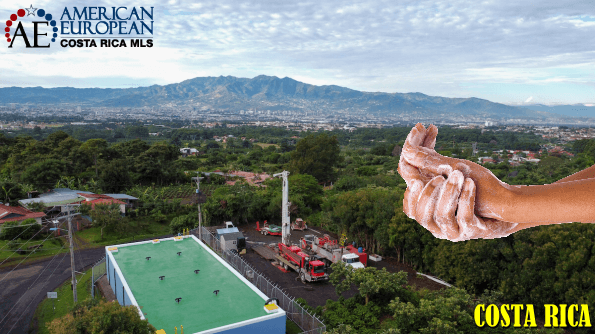
What are the Steps?
Once you have the permits, they’ll help you choose the appropriate drilling method. Then, they’ll drill the well according to the approved permit. During the drilling process, they’ll collect samples of the water and soil to ensure the quality of the water and the absence of contaminants.
After drilling, they’ll pump test the well in intervals of 24, 48, or 72 hours, depending on your project’s needs. Then, they’ll submit the final report, pump test report, and water analysis to the Government, and your well will be registered as a drilled well.
But that’s not all. To extract water from the new well, you’ll need to apply for a Concession from the Government, which can take 9-12 months.
Obtaining a legal water source in Costa Rica is complex and time-consuming. It’s crucial to work with a reputable company that can guide you through the process of obtaining the necessary permits and drilling a high-quality water well. But, by working with a reputable company like Pura Vida Drilling, who will guide you through the process, you won’t have to worry about a thing.


